One Page History Of Armenia
Armenia repeatedly suffered from conquerors. It seemed that Armenia would no longer exist on maps. But Armenians have survived and defended their existence. They have kept their culture and heritage despite the fierce battles and enormous losses.
Armenia is a sovereign state located in the South Caucasus. It is located in West Asia in the Armenian Highlands, which is the historic homeland of Armenian people.
Georgia borders it from the north, Iran from the south, Azerbaijan from the north-east and the southwest and Turkey from the west.
The territory of the Republic of Armenia is 29,800 square km. It is very similar to Belgium’s and Albania’s territory sizes. It lies at an average point of 1800 meters above sea level. 76.5% of the Republican territory is at the height of 1000-2500m above sea level.
The highest point is Mount Aragats (4090m). The lowest point – the valley of the Debed River (375 m).
Mount Ararat is the most important symbol of the country. Currently, Ararat is in Turkey’s territory.
What is the largest city in Armenia?
Yerevan is the largest city and the capital of Armenia. As of January 1, 2017, the Armenia’s population is 2 986 100. More than one million of the population live in Yerevan. Moreover, 97.9% of the population is of ethnic Armenian origin. Among other minorities are Russians, Yezidi, Assyrians, Ukrainians, Greeks, Georgians, and Belarusians. Armenia has a very large diaspora. About 8 million Armenians live in the world.
Armenia is a part of Europe. However, we can say that it is an intercontinental country. It is due to its location in the southern Caucasus, on the conventional boundary between Europe and Asia.
Armenia is a country full of cultural heritage. It is the first country which officially accepted Christianity as a state religion in the IV century.
HISTORY OF ARMENIA
Armenians are considered to be one of the most ancient nations in the world. Armenian Highland is the historical homeland.
Armenian people call themselves Hay and the country Hayastan.
The original Armenian name for the country was Hayk, later Hayastan (the land of Hayk). Surrounding states gave the name Armenia to the country. That name is traditionally derived from Armenak or Aram. Aram is the great-grandson of Hayk’s great-grandson. According to Armenian tradition, he is another leader who is the ancestor of all Armenians.
The current 29,800 square km territory size of the Republic of Armenia is only a tiny part. It is less than one tenth of the huge historical Armenia.
Armenian uplands were on the way of major trading and military routes of the Ancient world. They connected the East and the West. Hence, numerous conquerors envied this beneficial position of Armenia. Therefore, the borders of ancient Armenia changed frequently. Armenians had to move to new lands very often. So, the history of Armenia is rich and infinite.
GREATER ARMENIA (Armenia Major)
As the 1 st millennium BC began, class distinctions started appearing. The tribes of Armenian uplands formed tribal unions. In the 11th century BC, the powerful ancient slaveholding state Urartu was formed. The capital was in Tushpa (Van). During this period, the serious ethnic unification of Armenian tribes from the Armenian uplands and nationality took place. In the 9th-6th centuries BC, people of Urartu Kingdom created the ancient civilization. It defined the cultural future of ancient Armenia.
After Urartu, another ancient Armenian kingdom, Ervanduni, appeared. The governors and the population of Ervanduni were representatives of Armenian-speaking ethnic group. They were the ancestors of modern Armenians.
Tigran the Great
In 189 BC, Artashesian dynasty formed and ruled the Greater Armenia. It reached its peak of power in the first century BC. It was during the period of rule of Tigran the Great. King Tigran ruled an empire which extended from the Caspian Sea to the Black to the Mediterranean seas. This overshadowed Rome and Parthia in the Near East for some decades.
Armenia started entering the new era of its development. In the beginning of the period, the territory which Armenians occupied included these three separate areas.
- Great or Big Armenia
- Sofena, between the Euphrates and the Tiger
- Little Armenia – between the Euphrates the Lykos.
In the 2nd – 1st centuries BC these states merge in the uniform powerful slaveholding state – Great Armenia.
Three dynasties ruled Greater Armenia in succession. Each named after its founder. The Yervandouni, Artashisyan, and Arshakouni the last of which refused the crown in 428 AD.
WORLD WAR I AND THE ARMENIAN GENOCIDE
Just like for most of Europe, World War I changed the geopolitical situation of Armenia.World War I broke out leading to a confrontation between the Ottoman and the Russian Empires. The new government in Istanbul started to look on Armenians in a suspicious way and with distrust.
The Armenian genocide and World War I are closely linked to each other.
Ottoman Turkey fought on the side of the Central Powers. It fought against the Entente Powers.
Military leaders started arguing about the Armenians being traitors. As the war started getting more and more intense, Armenians organized volunteer battalions in order to help the Russian forces fight against the Turks in the Caucasus region. These events and the Turkish suspicion of the Armenian people overall, caused the Turkish government to push for the removal of the Armenians from the zones of war along the Eastern Front.
On 24 April 1915, Armenian intellectuals were arrested by Ottoman authorities. Eventually, a large proportion of Armenians living in Anatolia perished in what has become known as the Armenian Genocide.
The realization of genocide was in two phases.
- The wholesale killing of the able-bodied male population through massacre and subjection of army conscripts to forced labor.
- The deportation of the elderly, women, children band infirm on death marches leading to the Syrian desert.
Driven forward by military guards, those people were starving, with no water. They were continuously exposed to rape, robbery, and massacre.
The events of 1915 to 1917 are regarded by Armenians and the vast majority of Western historians as state-sponsored mass killings, or genocide.
During the time of the massacre, there were approximately 2 million Armenians living in the Ottoman Empire.
When the massacres and deportations finally finished by the early 1920’s, 1.5 million of Turkey’s Armenians were killed.
Many of them were forcefully removed from the country.
William Saroyan’s quote
William Saroyan, a famous U.S writer, the son of an Armenian immigrant, wrote the following lines regarding Armenians’ ability to survive as a nation:
“I should like to see any power of the world destroy this race, this small tribe of unimportant people, whose wars have all been fought and lost, whose structures have crumbled, literature is unread, music is unheard, and prayers are no more answered. Go ahead, destroy Armenia. See if you can do it. Send them into the desert without bread or water. Burn their homes and churches. Then see if they will not laugh, sing and pray again. For when two of them meet anywhere in the world, see if they will not create a New Armenia.”
This is from a short story called “The Armenian and the Armenian”.
The FIRST REPUBLIC OF ARMENIA
In May 1918, in the Eastern Armenia, an independent Republic of Armenia was finally formed. It existed for 2,5 years.
The First Armenian Republic was unable to hold out against the threatening attacks of Turkish armies and Bolshevik Russia. They wanted to invade Armenia.
Armenia became a Soviet Republic in 1920.
During 1941-45 Armenians together with other Soviet nations fought against fascism. More than 600,000 Armenians fought in World War II. 200,000 of them never returned from the front lines.
The Soviet Army had about 60 Armenian generals. 108 had the title of “Hero of the soviet union”. It was the highest award of the Soviet Union.
How long did it last?
The first Republic of Armenia barely lasted two years. However, it was a historic political entity. Because of its efforts, the establishment of a Soviet Armenian republic took place. This, in turn, allowed for an independent Armenia upon the collapse of the USSR seventy years later.
The Republic of Armenia today maintains the legacy of its predecessor. Certainly, in terms of national symbols.
The modern coat-of-arms is a modification of 1918 one. The tricolor flag was adopted with some uncertainty and controversy back then. However, it remains the accepted symbol of the Armenian nation today, whether in the Republic or in the Diaspora.
The national anthem is the “Mer Hayrenik” (“Our Fatherland”).
It is a poem, which wrote Mikael Nalbandian in 1859. The music composer is Barsegh Kanachian. The base song is an Italian old folk song, called ‘Song of an Italian girl’. It begins by “Our Fatherland …”. It refers to that country’s wars for independence against the Hapsburgs of Vienna.
The song is very much in the spirit of the Armenian struggles of that era. So, with no hesitations, “Mer Hayrenik” was adopted as the national anthem in 1918. During 70 years of Soviet occupation, an anthem glorifying the Armenian SSR replaced it. In 1991, upon independence, they took their old anthem back.
ARMENIAN RELIGION
Armenia is the first ever country in the entire world to officially accept Christianity as a state religion in 301. Whereas in the Roman Empire, religious freedom was established only 12 years later.
The roots of the Armenian Church go back to many centuries. Starting from the 1st century.
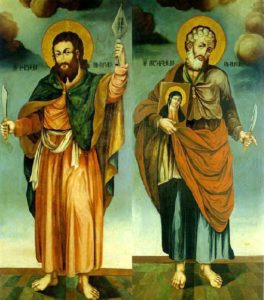 According to history, Armenian Church was founded by two apostles of Jesus, Thaddeus, and Bartholomew. They preached Christianity in Armenia from 40 to 60.
According to history, Armenian Church was founded by two apostles of Jesus, Thaddeus, and Bartholomew. They preached Christianity in Armenia from 40 to 60.
In their honor, the official name of the Armenian Church is Armenian Apostolic Church.
In addition, Armenians also call it Gregorian Church, in honor of St. Gregory the Illuminator. He was the first patriarch of the Armenian Church.
The Armenian Church has 4 hierarchical sees.
- Holy See of Ejmiadzin,
- Cilicia,
- Patriarchate of Jerusalem,
- Patriarchate of Constantinople.
Religion has very deep and strong roots here.
So, the majority of the Armenians living in Armenia belong to the Armenian Apostolic Orthodox church.
ARMENIAN LANGUAGE
The official language is Armenian, although many Armenians use Russian and English as well. The Armenian language is a separate branch of Indo-European language family, between groups of Slavic and Greek languages. The alphabet creator is Mesrop Mashtots(405 AD).
Language is so important for Armenians. There is even an Armenian Alphabet Monument in Byurakan.
Various Churches in Armenia
As one of the oldest countries in the whole world, Armenia is known as “the land of churches“.
There are around 4,000 churches and monasteries in Armenia.
Here are a few of them, to show the beauty and the rich religious heritage Armenians have.
KHOR VIRAP
This is one of the most favorite attractions of many travelers in Armenia.
As Armenians believe, St Gregory the Illuminator was imprisoned here in a dungeon. Dug 8 meters underground. The reason was that he was preaching Christianity to people. Despite the imprisonment of 13 years, he was still alive when they found him. Turned out that throughout those years, a Christian lady used to give him some bread.
ECHMIADZIN
This was the very first cathedral that was ever built in Armenia. And also, the oldest cathedral in the world.
The church was also the headquarter for all the other churches in Armenia.
The majestic view of the Echmiadzin church never fails to attract travelers.
GEGHARD
The name “Geghard” means spear. This spear was actually referring to the actual spear which was used to pierce Christ after he was crucified on the cross in order to check if he was still alive.
Many pilgrims head here to see the relic of the “spear”. Hence, they eventually renamed the monastery to Geghard Monastery (Spear Monastery).
The entire church was carved inside a rock mountain.
Armenian Mountains
Armenia is also known as “the mountainous island” since it has many unique and stunning mountains. Therefore, it can be heaven for those who love hiking and mountaineering.
ARARAT
This majestic mountain is no longer in Armenia. However, Ararat has always been and will always remain a treasure and a very valuable symbol for all Armenians.
Mount Ararat is the highest volcanic massif of the Armenian Plateau. It consists of two cone-shaped mountains: Big (Masis) and Small Ararat (Sis).
According to the Bible, Mt Ararat is where exactly the Noah’s Ark landed after the Big Flood.
ARAGATS
Name of the mount came from the famous Armenian king Ara Geghetsik (Beautiful). Aragats or “the throne of Ara” resembles the image of the great king from distance. In modern Armenia, mount Aragats is the highest poin. The location is in Aragatsotn region.
AZHDAAK
Azhdaak is the third highest mountain in Armenia. The highlight of the mountain is a small beautiful lake. There is ice water all year long. The water is very clean and transparent so that you can see the very bottom.
Armenian Lakes and Rivers
As you may already know, Armenia has beautiful nature full of mountains, meadows, rivers and azure lakes.
Here you will get to know some of them that will fascinate you with their unique beauty.
LAKE SEVAN
This is one of the highest and largest freshwater lakes in the world. As a lake, Sevan is so big that Armenians sometimes consider it as a little sea. The territory of Sevan has hotels and cottages. It is a very good place to relax and have some rest.
AKNA
A beautiful and majestic small lake located in the crater of Lchayn volcano on Geghama Highlands. Even though you cannot swim in the lake, you will surely enjoy the beauty of the lake. Striking impressions will last for a long time.
AKHURYAN 
Located in South Caucasus, it originates in Armenia.
Several medieval bridges once existed over the river. The bridge at Ani dates back to the thirteenth century.
The bridge’s single arch has fallen, leaving only tall abutments. They were perhaps part of a fortified gate.
CLIMATE OF ARMENIA
Despite the small area, Armenia has a tremendous climatic variety.
Because of the numerous mountain formations and the high location of the territory above sea level, the climate is continental. There is a large difference between the seasons, including hot summers and cold winters. Average summer temperatures exceed 25 º C. while in winter the temperature is -5 º C.
SUMMER IN ARMENIA, YEREVAN
WINTER IN ARMENIA, DILIJAN
AUTUMN IN ARMENIA

SPRING IN ARMENIA, YEREVAN
INTERESTING FACTS ABOUT ARMENIA
- Armenia is the most ancient wine producing country in the whole world. In 2011, archaeologists discovered the oldest winery on the planet near the village of Areni.
- Chess is a compulsory subject in schools. That’s why Armenians are so good at it!
- There are approximately 11 million Armenians worldwide. Only 3 million live in Armenia. In Los Angeles, there is even a “Little Armenia”.
- Yerevan is also known as the “pink city”. The buildings are all made of volcanic rocks of many shades of pink. Hence the name “pink city”.
- The first church in the world was built in Armenia. Holy Echimiadzin is the first church built in the world in the early 4th century.
- “Merci” is an acceptable way to say “Thank You”. Armenian is a very hard language. So, this alternative makes many people happy!
-
Mt Ararat is the national symbol. Locals believe that Mt Ararat protected Armenia from a super strong earthquake! They also believe that the peak of Mt Ararat was where Noah’s ark was found. Sadly, the mountain is no longer in Armenia.
- Apricot is also a symbol of Armenia. One of the colors of Armenian flag is also the color of the apricot. In the Middle Ages, Armenian kings would go to battle wearing apricot-colored ornaments. They were called “tsirani.”
- Churchill tasted Armenian cognac. During World War II, Joseph Stalin shipped several dozen cases of Armenian cognac to Winston Churchill. The British prime minister consumed with gusto. His love for brandy was no secret. He had drunk enough brandy to fill three railway carriages. He was 71.
- Armenian lavash has its place in Unesco’s list of Intangible Cultural Heritage in 2014. You’ll rarely see dinner tables without huge piles of lavash. It’s a tasty flat bread.
FAMOUS ARMENIAN CELEBRITIES
Ranked #1 in the world in 1995.
He has won the Wimbledon, the US Open, the French Open, and an Olympic Gold Medal.
Andre Agassi is a master strategist.
Wikipedia: Andre Agassi
Charles Aznavour is a world famous singer, chansonnier.
He was born in France in the family of Armenian immigrants.
iArmenia: Charles Aznavour
Cherilyn Sarkisian, better known as Cher.
Her great success in music, movies, television, and on stage has brought her nearly four decades of world recognition.
Wikipedia: Cherilyn Sarkisian
FAMOUS PEOPLE ABOUT ARMENIA
“The Armenians should be in the center of our attention and the attention of the whole world. And this is because of the superb culture, which was generated by Armenians for many centuries of independent existence. And the exclusively rich literature, which is a luxurious contribution of Armenia to the treasury of humanity.”
– Valery Brusov, Russian linguist
◊♦◊
“The nation, whose Christian faith is so old, the nation who did not turn away from Christ even after strongest storms and cruelest persecutions. The nation whose history is almost a ceaseless suffering certainly deserves not only our compassion but also our love.”
– Max Sax, Prince of Saxony
◊♦◊
“If the scriptures are rightly understood was in Armenia that paradise was placed. But whatever may have been their destiny and it has been bitter whatever it may be in future, their country must ever be one of the most interesting on the globe. And perhaps their language only requires being more studied to become more attractive. Armenian is the language to speak with God.”
– Lord Byron, English poet
◊♦◊
“I know about the Armenian Genocide. I know that Armenians have always struggled and kept their religion and self-determination. The Armenians have always represented their history to the world. They really are the noblest nation.”
– Mel Gibson
◊♦◊
“Although I write in English, and despite the fact that I’m from America, I consider myself an Armenian writer. The words I use are in English. The surroundings I write about are American. But the soul, which makes me write, is Armenian. This means I am an Armenian writer and deeply love the honor of being a part of the family of Armenian writers.”
– William Saroyan
◊♦◊
“I bow down in memory of the victims. I come to tell my Armenian friends that we will never forget the tragedies that your people have endured.”



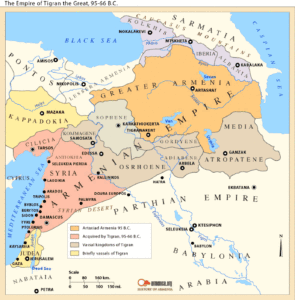

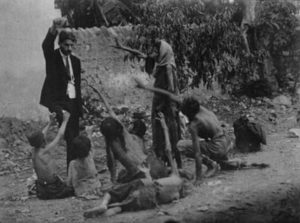
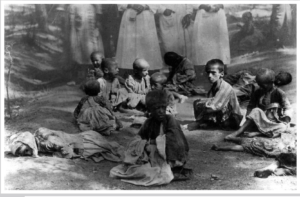
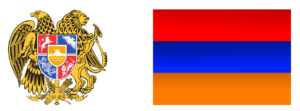

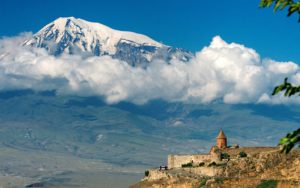
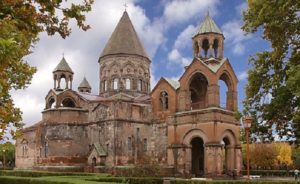
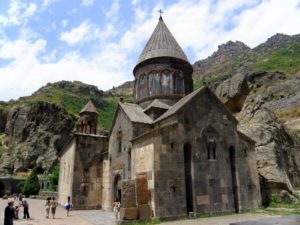
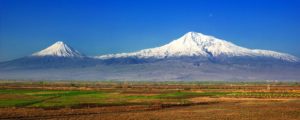
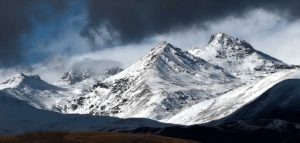
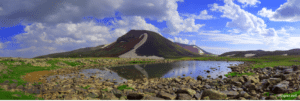
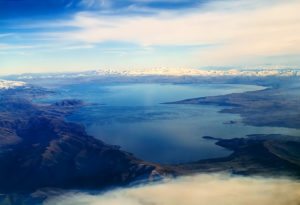
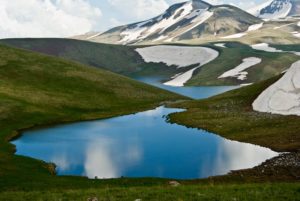


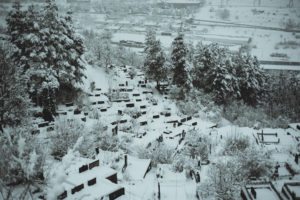
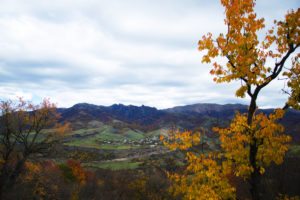
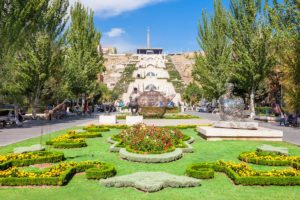

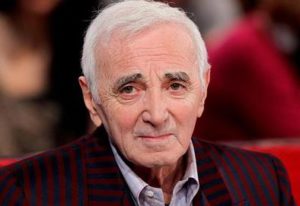
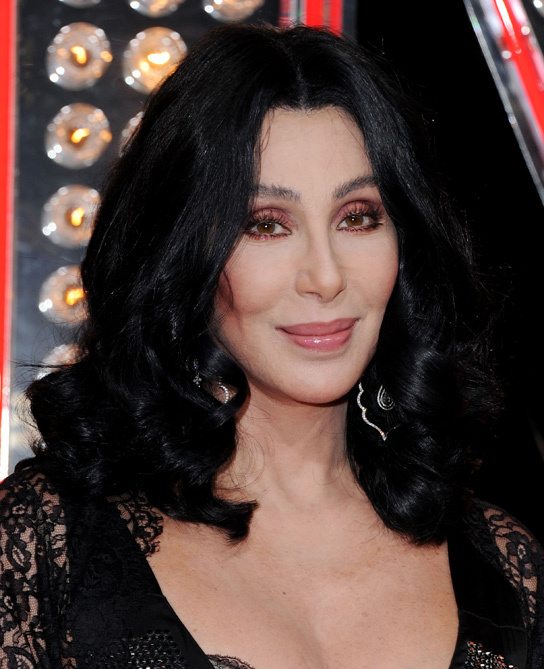





Leave a Comment